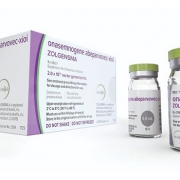As the grip of the pandemic eases, managed market executives on the pharma and agency side will have to modify their tactics with payers due to changed habits; at the same time, payers’ expectations of value remain strong.
Children growing up watching The Wizard of Oz remember the first time they saw little Toto pull the curtain back, exposing the Great and Powerful Oz as just a man. And even though he exhorted, “Pay no attention to that man behind the curtain!”—from that day forward, the gig was up. Today, if Toto were to expose how healthcare is paid for in the United States, we would realize that it’s the employer who is “that man behind the curtain.” And although pharmaceutical manufacturers still need to focus their attention on the intermediary companies—like UnitedHealth and Aetna, for example—it is becoming extremely important that they understand the pressure that employers are placing on these companies.
It’s hard to address something that you cannot define. Rare disease management is a high priority for payers. In a recent rare disease trend report, 90% of surveyed payer respondents ranked rare disease management as a high or moderate priority. This is due primarily to the significant budget impact of therapies that may be in the hundreds of thousands of dollars
Zolgensma’s successful market uptake by payers may hold lessons for other manufacturers of costly gene therapies.
The COVID-19 virus has fundamentally changed how we go about our daily lives on both a personal and professional level. We are becoming more accustomed to social distancing and virtual interaction with our friends, family members, loved ones, and colleagues. The change in behavior seems to be an easier adjustment in our personal lives than professional lives, but both have been impacted as a result of the virus.
What are payers focusing on in the time of stay-at-home, work-from-home, yet still trying to serve patients? What do manufacturers need to understand? Med Ad News spoke with Greg Novello, executive VP, strategy at McCann Health Managed Markets; Adrian Garcia, senior VP, managed markets, at GSW; and Katherine Seay, executive VP, managing director, managed markets communications, Syneos Health.
Pharma companies may not like their products being the subject of ICER reports, but they can provide a jumping-off point for manufacturers to expand the conversation of the value of new medicines in the rare disease area.
The marketplace is changing. It has become cliché to say it. In fact, for years the healthcare market access space has been under pressure to evolve, grow, and reinvent itself – all while digging in its heels and clinging to a vanishing status quo.
Access to treatments for rare diseases depends on a delicate balance of a price that allows for the development of innovative therapies while also being considered “affordable.” A low price for a manufacturer’s therapy would discourage potential developers from focusing their future efforts on new therapies because of a limited return on investments. At the opposite end of the spectrum are barriers to access based on a price that is considered cost prohibitive; utilization is limited in an effort to control costs. The balance between these 2 opposing access decision-making contingencies will determine the degree to which patients with rare diseases will receive the treatments they need.
Current health systems built to evaluate and pay for traditional drugs are going to struggle with gene and other unusual therapies – but manufacturers can take steps before launch to define how manufacturers assess and value these new products.








